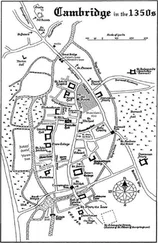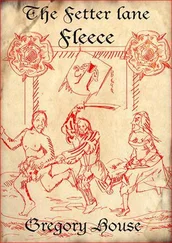“But, since he used the dust from the Pietà for his Bacchus, that means then that his plan did in fact change.”
“Yes. Perhaps he figured out another, even more intimate way for his victims to connect with the statue that they were about to become. Perhaps he scrapped his initial idea of the magic being in the marble itself. Perhaps he gained a deeper understanding of the opening quote to your book-that the magic lies only in the sculptor’s hand.”
“But, Sam, then that means-”
“Yes, Cathy,” said Markham, swerving onto the highway. “I was wrong about the profile for this killer. I had an inkling of this when I was back at Quantico, when I was going over the information on the Plastination industry, but couldn’t put my finger on it. There’s little if any self-gratification for The Michelangelo Killer in the actual act of murdering victims. Murder is only incidental for him-a means to an end in acquiring material for his sculptures. However, as we saw with Gabriel Banford, and as was surely the case with Tommy Campbell and his severed penis, it is crucial that The Michelangelo Killer’s victims, his material, become aware of their fate themselves -to awaken from their slumber, if you will, in order to truly become one of his creations. And I suspect that any self-gratification on the killer’s part would come from that. Yes, there may be a sexual component to this, but I suspect it arises out of a more intellectually and spiritually complex connection with his creations than simple, base-level sexual gratification-a connection that the killer would see as akin to Michelangelo’s connection with his creations. I’ve suspected from the beginning that The Michelangelo Killer is not seeking only some kind of self-gratification-sexual, spiritual, or otherwise-and always thought of him more in the context of a mission killer, that is, a killer with a specific goal. However, I see now that I made a crucial mistake with regard to his victims.”
“It’s why Sullivan and her team have been unable to establish a pattern,” Cathy said. “Why they’ve been unable to find any murders or disappearances of young men in Rhode Island that fit the profile of Banford or Campbell or Wenick. We’ve been looking in the wrong place, Sam. We’ve been looking only at men.”
“Yes, Cathy. Humans are The Michelangelo Killer’s material-both men and women. The killer has both a reverence for his material and the understanding that some of it has to be wasted. And just as I am sure he considers the male of the species as aesthetically superior, I am also sure now that, if he had to waste material in the experimentation with and development of his Plastination technique, he would focus solely on females. I suspect that if we start looking into the disappearance of female prostitutes in the last six years, we might come up with something.”
“So he had planned in the beginning on using a female for his Pietà?”
“It looks that way, yes.”
“And then for some reason he abandoned that project and began focusing on Michelangelo’s Bacchus? Perhaps because he saw the similarity between Bacchus and Tommy Campbell? Perhaps because he also found a better way of getting his message across to the public?”
“Perhaps.”
“But the breasts…” Cathy said absently.
“What’s that?”
“I’m not sure, Sam. Something’s been bothering me for almost two weeks now-something, like you, I can’t quite sort out.”
As Cathy and Markham sped across town toward the East Side of Providence, a brown paper wrapped package-bundled neatly with the rest of her mail into a folded Pottery Barn catalog-sat waiting patiently in Cathy’s mailbox.
Even the postman had thought it a curious-looking parcel-felt bubble wrapped, about the size of a DVD case-but with no return address, and covered with far too many stamps-of various denominations, ten dollars worth in all-as if the sender did not want to go to the post office, but wanted to make sure it arrived at its destination. But what was even more curious to the postman was the way in which the sender saluted its recipient-a neatly written phrase above the street address which read simply:
Especially for Dr. Hildebrant.
Miles away, The Sculptor wiped the spittle from his father’s chin. Instead of seating him as he usually did in the big chair by the window, The Sculptor had served his father his supper in bed that evening. He had played a few episodes of The Shadow on the CD player inside the old Philco and thought he saw the left corner of his father’s mouth curl up ever so slightly during the introduction.
Then again, The Sculptor could not be sure. His mind might be playing tricks on him, for he was tired- very tired. And he had been working very, very hard lately. His Pietà was completed-had come together in just over two weeks from the afternoon he picked up RounDaWay17 at Kennedy Plaza in downtown Providence. Then again, in a way he had cheated, for The Sculptor had finished off many components of his Pietà over a year ago-the metal frame, the rock of Golgotha on which the Virgin would be seated, the contours of her flowing robes. And of course, the most important parts of the Virgin herself-her head, her hands, her breasts-had been preserved, articulated, and painted long before Bacchus and his satyr went into the pressurized tub of chemicals.
Back then, when he first started experimenting with pieces of the women, the Plastination process took much longer than it did now-just as long as it still took von Hagens and his team over in Heidelberg, Germany. But The Sculptor had made improvements on von Hagens’s methods; he found that he could speed up the process considerably by alternating pressure and energy currents through the solvent, as well as by inserting thin “conductor tubes” at key points around the body between the various tissues. And unlike von Hagens, who skinned his subjects to display the muscles and internal organs, The Sculptor, who had no need for the insides, found that hollowing out the torso and placing a single conductor tube along the spine would help speed up the process even more. And so, whereas it took von Hagens months, sometimes a whole year to prepare and then pose a figure, it now took The Sculptor-working diligently, around the clock-just a little over a week.
Yes, The Sculptor could have made quite a bit of money patenting the improvements on von Hagens’s Plastination process if he wished. But then again, The Sculptor was not concerned with such base matters as money.
Ironically, it was the skin that had always given The Sculptor the most trouble, for during the process of preparing his figures The Sculptor found that, after dissolving the hair with depilatory cream and removing the lipid tissues from underneath, the skin became loose and slippery and very difficult to work with. And only through trial and error with the pieces of the women did he finally find the right balance of traditional tanning techniques and the methodology he adapted from von Hagens. The result gave him a tighter surface through which he could articulate the veins and muscle tissue underneath for desired definition and detail, yet the skin remained porous enough so that his mixture of special paint bonded with it nicely.
Indeed, once you got past all the trial and error, all the experimentation with this or that much of yada-yada-chemical , the rest of the process was pretty straightforward. After The Sculptor hung and drained his material from a large hook he had attached to the bottom of the mortician’s table-and after the internal organs had been discarded and the preliminary embalming of formaldehyde complete-The Sculptor followed his improvements upon the Plastination process until it was time to pose the prepared figures and let the silicone harden in a bubble of plastic sheeting heated by UV lamps. Unlike with his Bacchus , the appendages of which required a much more complex articulation process to get the positional ratios correct, the Rome Pietà did not take nearly as long. The Pietà was much tighter, much more compact in the way the original figures’ limbs had been carved from the marble. The real trick had been getting the angles right-the Virgin’s arms, the tilt of her head, the degree of incline of Christ on her lap.
Читать дальше












